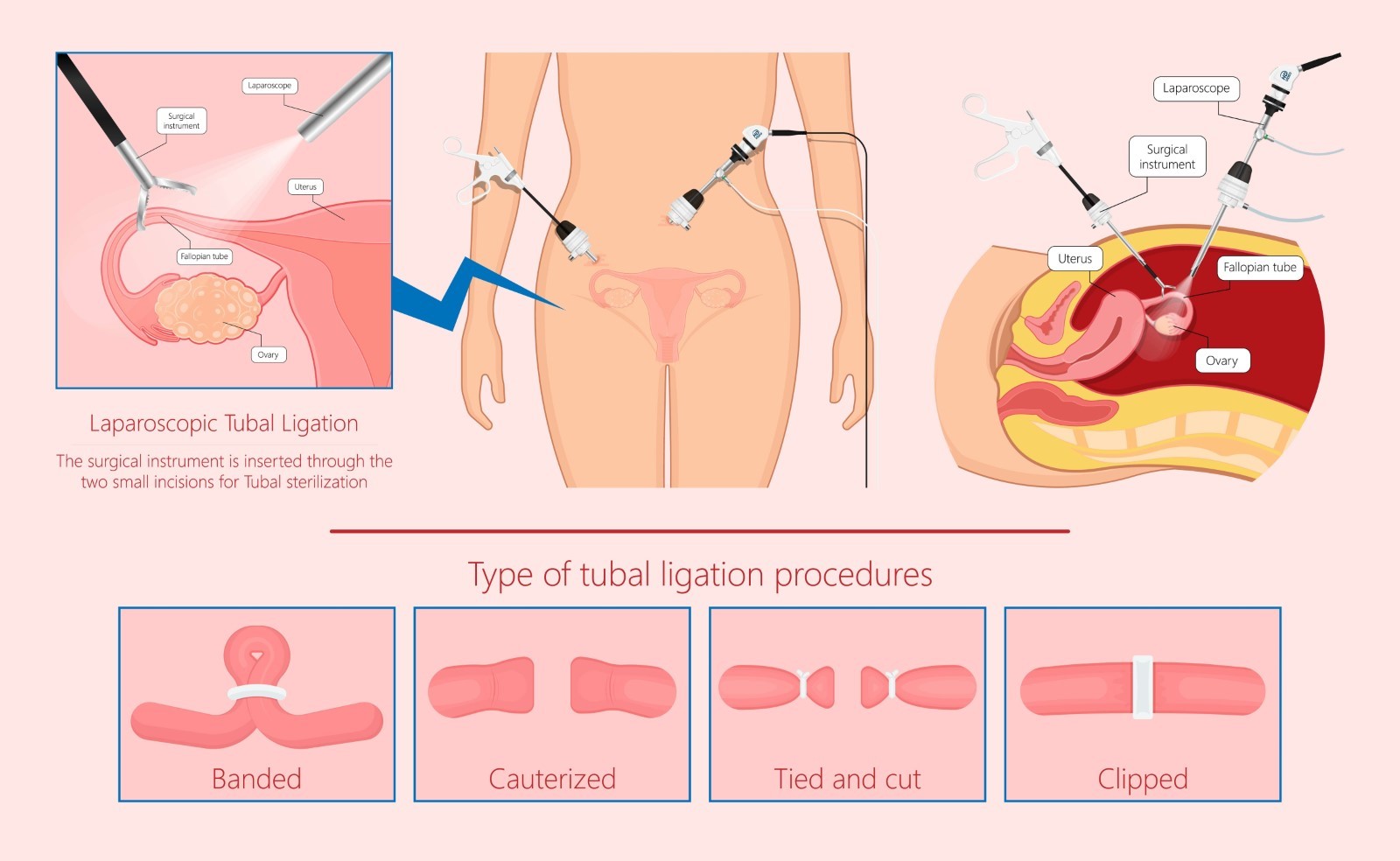Generating insights on laparoscopic tubal ligation, this guide navigates through its workings, the balance of its benefits and risks, and what to expect post-procedure. With a clear focus on the audience’s understanding, this guide will clarify everything from laparoscopic tubal ligation procedure details to addressing all pressing queries.
Understanding Laparoscopic Tubal Ligation: Procedure, Benefits, and Risks
Laparoscopic tubal ligation offers a modern twist to female sterilization. Unlike traditional methods, this advanced surgery is less invasive, making it a more appealing choice for many women.
The laparoscopic tubal ligation procedure is simple but effective. It starts with a tiny incision near the belly button. A thin tool with a camera, called a laparoscope, is inserted. This tool lets the surgeon see clearly inside the abdomen without making large cuts. Then, the Fallopian tubes, which carry eggs from the ovaries to the uterus, are blocked or sealed. It’s quick and usually done with minimal discomfort.
Laparoscopic tubal ligation benefits are numerous: – Quick Recovery: Compared to older methods, you’ll bounce back faster. – Lower Infection Risk: Since it’s minimally invasive, there’s less chance of infection. – Autonomy Over Reproductive Choices: It empowers women in making long-term family planning decisions.
However, every procedure carries its set of challenges. Laparoscopic tubal ligation risks include: – Potential for bleeding or injury to nearby organs, though rare. – General risks associated with anesthesia.
Laparoscopic tubal ligation side effects might involve slight abdominal discomfort or shoulder pain. Such effects are common post-surgery and temporary. But understanding these risks ensures you can make informed decisions.
Recovery Time and Lifestyle Considerations
The expected laparoscopic tubectomy recovery time is relatively short, usually spanning a few days. Initially, mild cramping or discomfort can occur. Most women return to regular activities within a week.
The timeline is as follows: – Day 1-3: Rest is crucial. Gentle movements help ease minor discomforts, but avoid strenuous activities. – Day 4-7: Gradual return to normalcy. Walking and light activities are beneficial. – Week 2 Onwards: Most daily activities, including work, resume comfortably.
This procedure aligns with various lifestyle and family planning goals: – Women seeking permanent contraception find it ideal. – Those juggling careers can benefit from the brief downtime.
For a smooth recovery, consider these tips: – Stay Hydrated: Drink plenty of fluids. – Wear Comfortable Clothes: Loose clothing minimizes abdominal pressure. – Seek Support: Don’t hesitate to ask for help with chores or childcare.
Real-life experiences often echo these timelines. Many women, like Jane, found relief in the swift recovery, allowing her to resume her routines quickly. Health experts advocate listening to your body and not rushing the healing process.
Success Rates, Long-term Effects, and Addressing Common Misconceptions
The laparoscopic tubal ligation success rate is impressively high, generally over 99%. This effectiveness ensures the procedure serves its purpose as a permanent solution.
But several misconceptions cloud the procedure. A popular myth is that it affects hormonal balance. In reality, laparoscopic tubal ligation does not alter hormones, as the ovaries remain unaffected.
The procedure’s irreversible nature can sometimes lead to regret, especially if circumstances change later in life. Thus, it’s essential for women considering it to be confident about their family planning decisions.
Long-term effects are generally positive. There’s little to no impact on menstrual cycles or sexual pleasure. Over time, periods may naturally become lighter with age, but this is unrelated to the procedure.
Dispelling myths is crucial for empowerment: – Myth: “This procedure will make me gain weight.” – Fact: Weight changes are unrelated to this procedure. – Myth: “It’s reversible.” – Fact: While some surgeries attempt reversal, success isn’t guaranteed.
This procedure’s alignment with modern women’s health trends is notable. Women today seek autonomy and reliable solutions, making this an excellent option.
In conclusion, laparoscopic tubal ligation stands out as a trustworthy method for those certain about not expanding their families. Knowing its benefits and risks aids in making choices that resonate with personal goals and preferences. Whispered myths shouldn’t deter your decisions—knowledge is empowerment.
